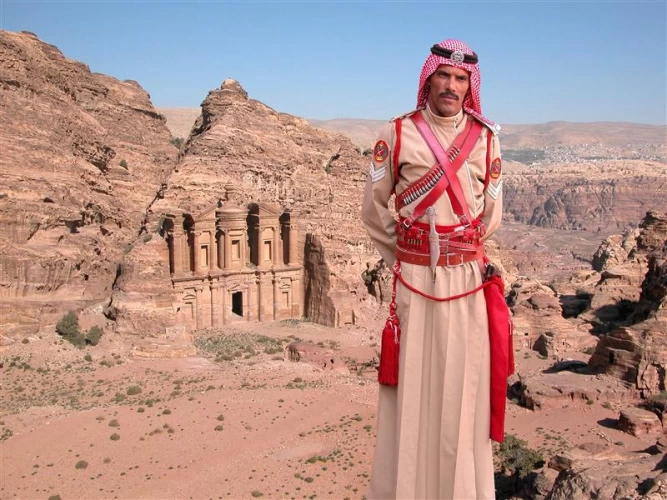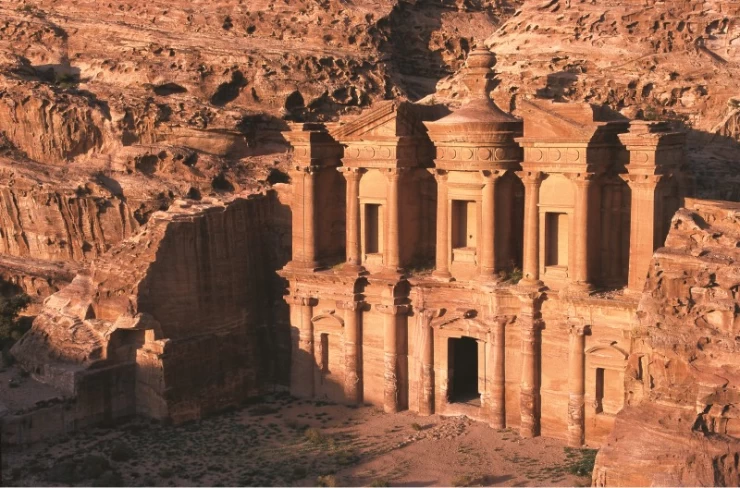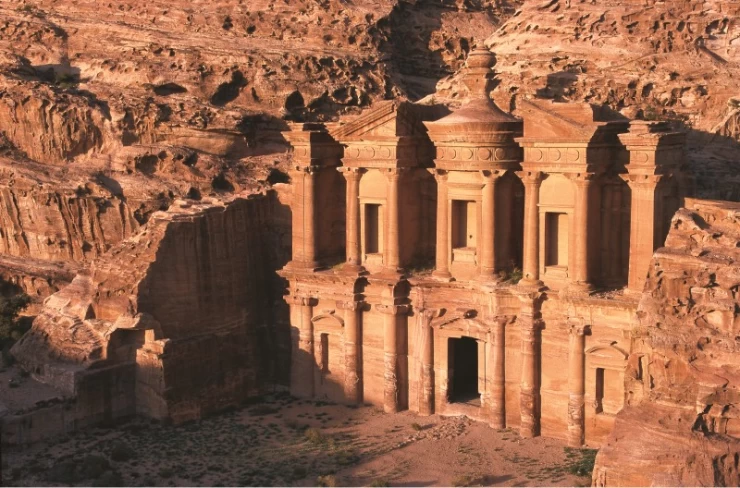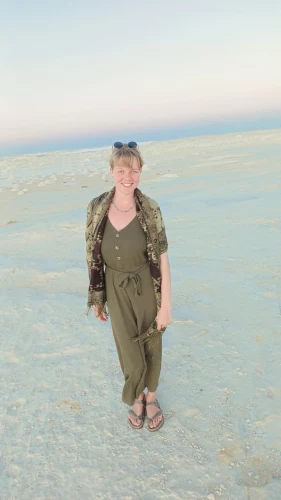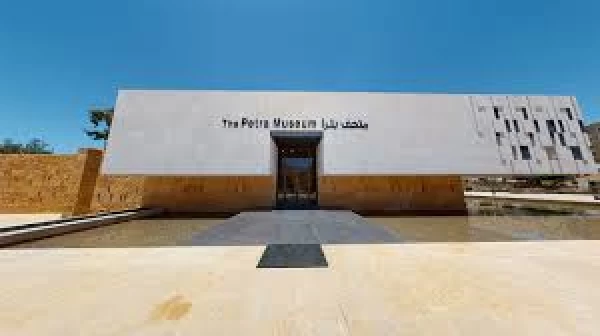
Petra Museum
Petra Museum
The Petra Museum was among the most visited attractions during His Majesty King Abdullah II’s recent tour of the Petra Region few days ago. The visit of the royal entourage to the museum helped further appreciate this structure which chronicles the history of the city and the various periods characterized by the Nabataean, Roman, Islamic and contemporary eras.
The Petra Museum offers for you more than in the Petra Archaeological Reserve, here is ‘The History of Petra’ from the Stone Age to Nowadays, and here you will be able to reveal the mysteries of the town and the people who once inhabited it.
A variety of artifacts found in and around Petra are on display at the Petra Museum, along with interactive screens that tell the region's history, historical visualization films, and life-size models constructed inside the museum. All of these exhibits are based on current research into the history, archaeology, and legacy of the area.
On October 10, 2014, His Majesty King Abdullah II ibn Al Hussein set the museum's foundation stone. On World Heritage Day, April 18, 2019, His Royal Highness Crown Prince Al Hussein bin Abdullah II officially launched the museum. The museum has 8 halls that tell the story of Petra from ancient times until its discovery in 1812 by the Swiss traveler Johann Burckhardt and its restoration under the Jordanian state:
Exhibition Hall 1: Water and the Nabataean Civilization : Petra was constructed by nomadic tribes of Nabataeans who were proficient in flood control, hydraulic engineering, and water management. Using 3D reconstructions of Petra's hydraulic infrastructure and displays of water pipes that were dug out from the planet, this exhibition delves into the secrets of Nabataean water engineering.
Gallery 2: The Foundations of Petra
The exhibition that follows begins with the bust of Dhu al-Sharah, the patriarch of the Sharah Mountains and spans the distant Petra region chronology and further ‘history before Nabateans’ – starting with the Stone Age Bronze Age up until Edomites– whose kingdom reached its zenith in the Iron Age. Artifacts from various archaeological sites are presented, such as the Neolithic settlement of Bayda or the Edomite site of Tawilan.
Gallery 3: Nabataean Interactions
The Nabataeans, nomadic Arab tribes who arrived from Arabia, amassed their wealth through trade between the Arabian Peninsula and the Mediterranean world, founding the Nabataean kingdom and the city of Nabataea and the city of Qumu (Petra). They incorporated various new cultural practices encountered in the course of trade into their traditional way of life. This exhibition presents the history and cultural interaction of the Nabataeans through the presented artifacts, such as including statues that are influenced by Greek, Roman, and Egyptian culture alongside Arabic traditions, as well as an AV which depicts the rise and fall of the Nabataeans from 600BC to 200AD.
Saal 4 : Nabataean Civilisation at its peak
From the first century B.C. until the first century A.D., the Nabataean monarchy prospered. During this time, several rock-hewn tombs including the Khazneh (Treasury) were constructed at Qumu (Petra). This exhibit includes an interpretative look at the Nabataean beliefs about life and death through artifacts discovered within the Treasury, a 3DCG animated clip showcasing how the Treasury was carved out, and a video of the burial practice carried out inside the rock hewn tomb located under the Treasury.
Exhibition Hall 6: Nabataean Expressions Gallery 5: Life of the Nabataeans
This exhibition is dedicated to focusing on the Nabataean society, through three main themes: The Nabataean kingdom and kings, the lineage of the Nabataean kings, coins bearing their images, royal artifacts, .... etc. Nabataean language, writing and inscriptions. Trade, mainly frankincense and myrrh, and artifacts and road maps related to trade.
Gallery 7: The Decline of Petra
This exhibition gives us an overview of the history of the Petra region, as the Nabataean Kingdom enjoyed a period of prosperity until the Romans occupied it in 106 AD, and gradually declined and lost the semblance of civilization as a commercial center and turned into a rural village.
Gallery 8: Revitalizing Petra
Since the discovery of Burkhardt in 1812, Petra has drawn the interest of numerous tourists and archaeologists. The evolution of excavation and research on the Petra site from the 19th century is examined in this exhibition. It also highlights the distinctive traditional arts of the Petra region's inhabitants, who continue to practice the centuries-old Nabataean civilization.
Latest Articles
Admin
Aswan Governerate in Egypt
One of Egypt's southern governorates is Aswan Governorate. The city of Aswan serves as its capital. At a latitude of 22 north of the equator (also known as the Tropic of Cancer), it is bounded to the north by the Qena Governorate, to the east by the Red Sea Governorate, to the west by the New Valley Governorate, and to the south by the Republic of Sudan.
Admin
Luxor Governorate Egypt
The capital of the Arab Republic of Egypt is Luxor City, which was once known as "Thebes City" because it served as Egypt's capital during the Pharaonic era. It is situated in the South Upper Egypt region, approximately 670 kilometers from the capital Cairo from the south. It is bordered on the north by Qena Governorate, on the south by Aswan Governorate, on the east by Red Sea Governorate, and on the west by New Valley Governorate.
Admin
History of kafr El Sheikh Governorate
Kafr El Sheikh Governorate is an Egyptian governorate, located in the northernmost part of Egypt in the Nile Delta, with Kafr El Sheikh as its capital. It had a population of 3,172,753 in 2015 and an area of 3,748 km². Its entire area is located north of the delta and overlooks the Mediterranean Sea. The main economic activity of the residents of the governorate is agriculture and fishing, especially the southern lands of the governorate and the lands overlooking the Nile River - Rosetta Branch.
Admin
Egypt's New Administrative Capital
The New Administrative Capital is located between the Cairo-Suez and Cairo-Ain Sokhna roads, 60 km from Cairo and the same distance from Ain Sokhna and Suez. The New Administrative Capital is located on the border of Badr City, in the area between the Cairo-Suez and Cairo-Ain Sokhna roads, just after New Cairo, Mostakbal City and Madinaty.
Admin
Al Gharbia Governorate
Gharbia Governorate is one of the governorates full of archaeological sites, whether they are places or facilities (mosques, churches), as the governorate is a destination for visitors to these places throughout the year, whether they are Egyptians from the different governorates.
Admin
Hamata Islands (Qulaan Archipelago) in Marsa Alam
The Hamata area, south of Marsa Alam in the Red Sea, is one of the most important parts of the Wadi El Gemal Reserve, whether in the desert or the sea. It was named after the sorrel plant, which was distorted to Hamata.






